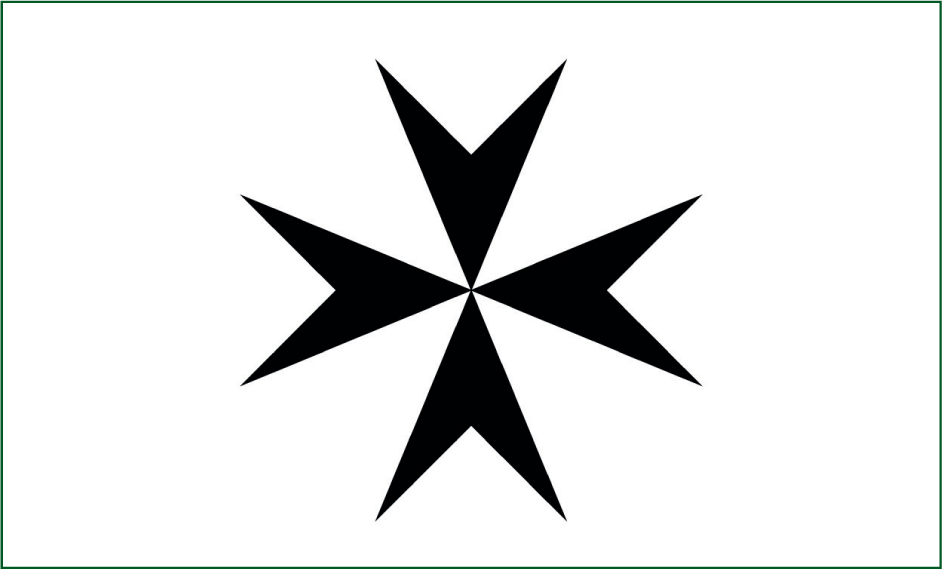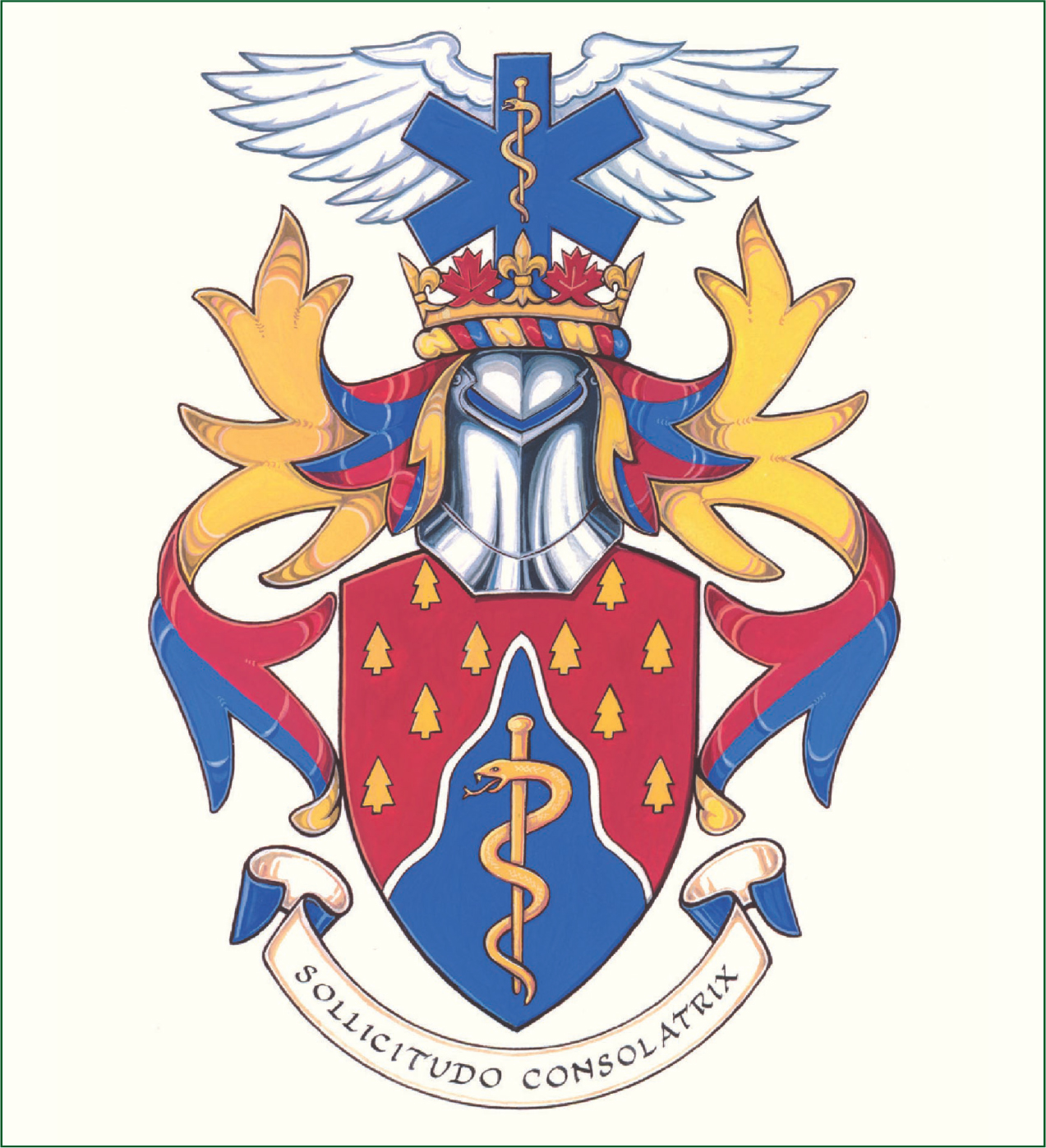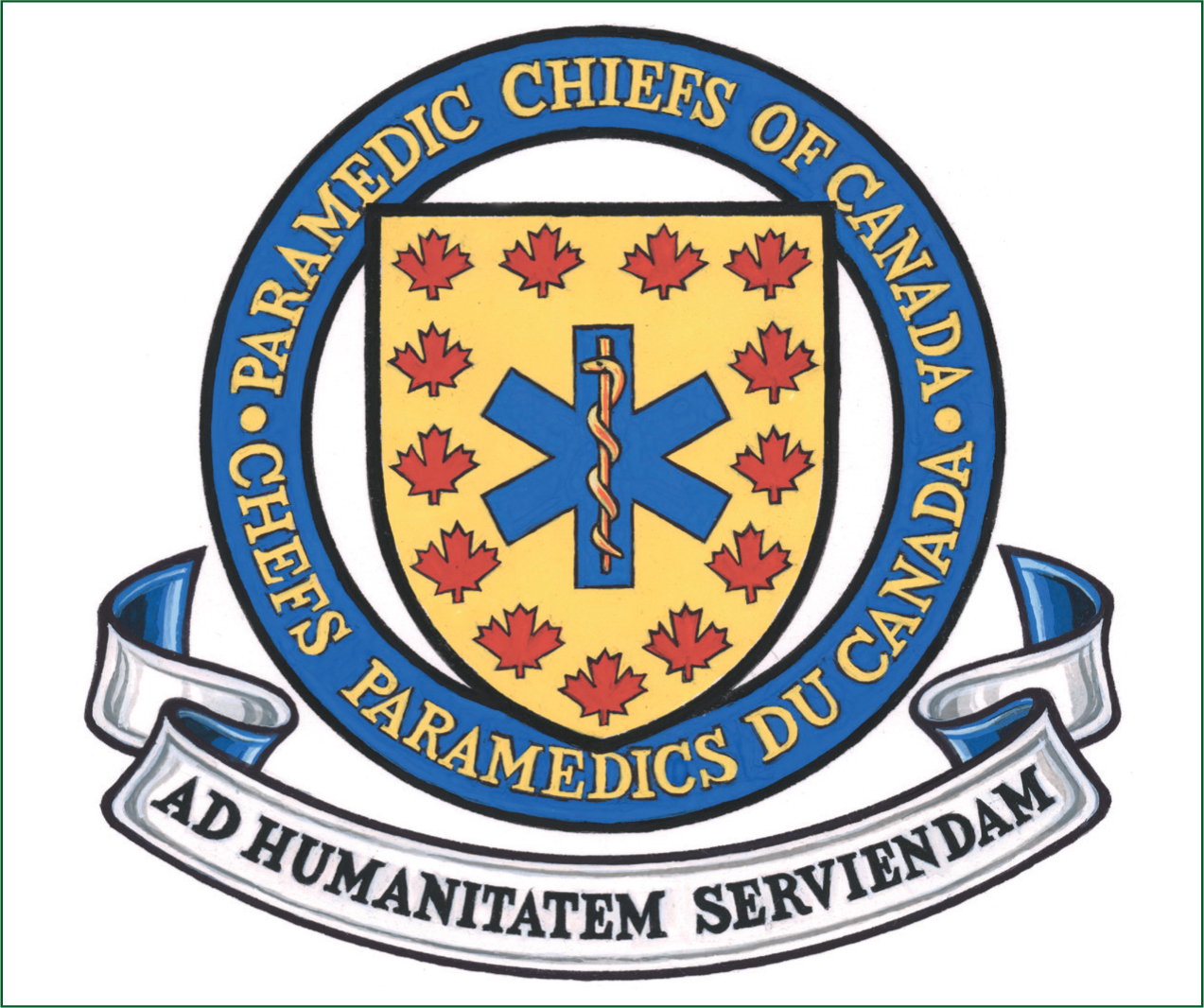Heraldry is a codified system of identifiable symbolism originating in the 13th Century as a means of identifying knights on the battlefield, and later during tournaments. Since then, armorial bearings (coats of arms) have been granted to individuals, charities and companies throughout the UK. In Scotland, the heraldic authority is the Court of the Lord Lyon, while for England, Northern Ireland and Wales, this role is undertaken by the College of Arms in London.
Paramedic heraldry in the UK
A full search of the records of both the College of Arms in London and the Lord Lyon Court in Edinburgh would be required to ensure inclusion of all armorial achievements awarded to paramedics, ambulance clinicians and ambulance services. However, without such a time-consuming and expensive investigation, we can discuss some of the records in the public domain.
The most widely used heraldic device (Table 1) in relation to UK paramedic practice is probably the crown badge, which features on most NHS ambulance service uniforms, often taking pride of place on frontline vehicle livery. This badge was granted in 1985 and features allusions to a modified staff of Asclepius as a spoke of a wagon wheel, representing the healing arts and transportation.
| Heraldic device | Meaning |
|---|---|
| Fleam |
A stylised drawing of a surgeon's blade |
| Ligature Knot | Also known as the Surgeon's Knot, this is a common knot used when suturing; heraldic device depicts a drawing of the knot (available at http://mistholme.com/wp-content/uploads/2014/02/knot_ligature.jpg) |
| Phoenix |
Symbolises life, death and rebirth |
| Star of Life |
Designed by Mr Leo R. Schwartz in 1973 as a symbol to be used for emergency medical services vehicles in the United States of America |
| Staff of Asclepius |
Asclepius was the ancient Greek god of medicine and healing |
St John Ambulance is probably also a key contender for most well-known ambulance heraldry; as their core logo, the Maltese Cross (or Cross of St John) is an eight-pointed cross and a traditional heraldic device (Figure 1). The four arms of the cross represent: prudence, justice, temperance and fortitude, while the eight points are said to symbolise the eight Beatitudes recounted by Jesus in the Sermon on the Mount. In relation to the British Order of St John, these eight points are said to represent the eight qualities of a good first aider, those being: observance, tact, resourcefulness, dexterity, clear communication, discrimination, perseverance and sympathy.

Another example is The London Ambulance Service, which was granted arms in 1996 (Hartemink, 2019). These stylish arms feature the rod of Asclepius, but also some other interesting imagery such as the double-headed phoenix with mistletoe in its beaks and two winged unicorns supporting the shield, representing a speedy response in times of need. Their motto is ‘Dedicated to Care’.
Although not an ambulance service, it is interesting to mention the arms of the Royal College of Emergency Medicine—a collegiate cousin of the paramedic profession—whose arms feature, as supporters of the shield, the wounded man, which may be familiar to readers of older medical texts. It also features three plants: nettles and the cure to their stings (according to folk law), the dock leaf and the poppy, representing opioid analgesia. Their motto is Semper succurimus aegris, translating to ‘We always help the sick’ (Thurston, 1997). In many jurisdictions, such as the United States, there is no official governmental procedure for granting arms, while Canada has a similar system to the UK.
Paramedic heraldry in Canada
As Canada has its own Heraldic Authority, there are a number of paramedic and ambulance-related coats of arms present in their armorials.
The heraldic achievement of Coopérative des Paramédics de l'outaouais (Figure 2) beautifully includes the modern star of life in the crest combined with the staff of Asclepius, which is also featured on the shield. The other elements of the shield represent the province of Quebec and the Outaouais region. The Cooperative of Ambulance Technicians of Quebec on their achievement granted in 2008, again features the star of life and rod of Asclepius motif with the addition of the French fleurs-de-lis to the points of the star. It also features the phoenix, as supporters on both sides of the shield and in the crest, in a way reminiscent of the arms of the London Ambulance Service.

Toronto emergency medical services petitioned for a heraldic badge rather than a full achievement of arms, in a manner very similar to the approach of ambulance services within the UK with the crown badge. They have again incorporated the star of life and the staff of Ascelpius. The badge also features the trillium flower of Ontario and the white rose of York, in reference to Toronto's original name. The Ontario Association of Paramedic Chiefs and the Alberta emergency medical services have also opted to include both the star of life and the rod of Asclepius, as did the Paramedic Chiefs of Canada, who surrounded theirs with thirteen red maple leaves (Figure 3).

Conclusion
The history of heraldry is vast and complex, and although the paramedic profession is a young one, it has already made its mark in this field. Our colleagues across the Atlantic in Canada, with the Canadian Heraldic Authority, have already been granted achievements of arms for various ambulance and paramedic organisations (and their public register is fully searchable online), as have many Royal Colleges and associated Faculties in the UK. To date, there is no coat of arms in the UK for a professional body for prehospital clinicians, but this could change with the College of Paramedics working with the College of Arms in London.
If you were designing a coat of arms to represent all paramedics in the UK, what symbols, colours or mythical beasts would you incorporate (Figure 4)?


